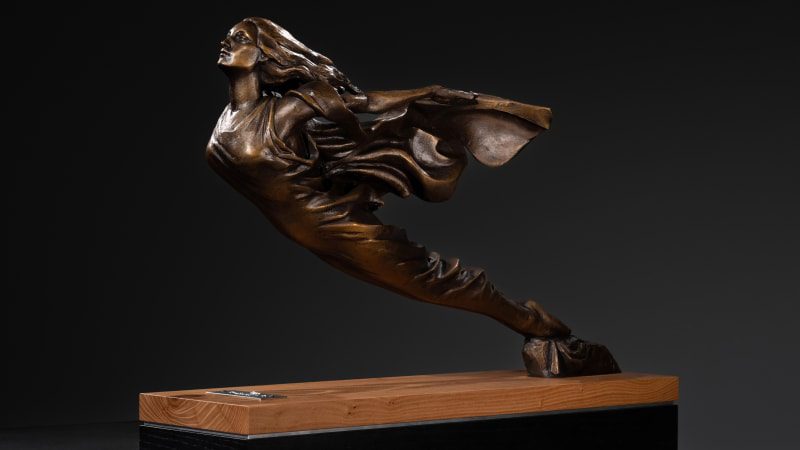Cadillac's Celestiq brings return of Flying Goddess hood ornament

Now that Cadillac has been given the funding and freedom to create cars like the Celestiq (potentially) worthy of the brand’s heyday, it is (potentially) fitting that an icon of that heyday returns. The luxury automaker announced it’s bringing back the Flying Goddess hood ornament created in 1929 for its V16 models like the 1930 Sport Phaeton. Today’s Cadillac gave GM Design sculptor Richard Wiquist the job of hand sculpting a new Goddess for the Celestiq that would represent the brand’s heritage and the craftsmanship embodied in the $300,000 electric sedan, and that would, in pose as well as metaphor, point the way forward.
The move is the next step in the return of the Goddess, actually, designers having placed her image in the rotary infotainment knob of the 2016 Escala concept. A few years ago, Cadillac said the layout “provides a glimpse into future Cadillac infotainment systems.”
The brief backstory is that entering the 1920s, hood ornaments started to become must-haves for luxury vehicles, and they became standardized symbols of brand recognition in the 1930s. British sculptor Charles Sykes sculpted Rolls-Royce’s Spirt of Ecstasy in 1911. British painter F. Gordon Crosby created the second Flying B that would become the Bentley standard after first appearing on the 1930 8 Litre, as well as Jaguar’s Leaper that debuted in 1938. In the GM subsidiary that created the automaker’s brightwork at the time, sculptor William Schnell created the Flying Goddess to represent “the very spirit of unsurpassed swiftness and power, coupled with grace and perfect balance.”
Cadillac made her an option on its V8, V12, and V16 cars. Two other sculptors in the same subsidiary refined her looks in 1933. Cadillac put her on the V16 models in 1934, then on the eight- and 12-cylinder cars. She remained a fixture through a few more evolutions until 1956. Her last appearance came on the 1959 Eldorado Brougham that wore Pininfarina bodywork, but she was so stylized she could be mistaken for a bird or abstract art.
Wiquist based his version for the Celestiq off the 1933 template exclusive to the Cadillac Sixteens. She’ll appear in three locations on the car, starting with her image above the words “Hand Built in Detroit” on a polished billet aluminum plaque encased in glass on the front quarter panel. An illuminated Goddess icon appears above the charging port. And as previewed by the Escala, she shows up again inside the rotary infotainment knob, backlit and always facing right no matter which way the knob turns. No, she won’t appear at the front of the hood, but we have a feeling it’s but a matter of time before Cadillac remedies that omission.
Related video:



